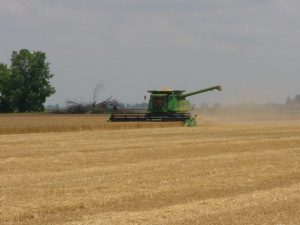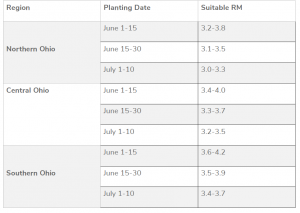Agronomy, Homepage Slider, Soybean Quality
Double Crop Soybean Management Considerations for 2022
By Dr. Laura Lindsey, adapted from C.O.R.N 2022-18
Wheat harvest is just around the corner, and it’s time to consider double-crop soybean production management.  For double-crop soybean to be successful, you need adequate time and moisture for the production of the soybean crop. In southern Ohio, double-crop soybean after wheat harvest is common. In central and northern Ohio, double-crop soybean after winter wheat depends on the wheat harvest date and soybean prices. With high soybean prices, we anticipate interest in double-crop soybean production in central and northern Ohio this year.
For double-crop soybean to be successful, you need adequate time and moisture for the production of the soybean crop. In southern Ohio, double-crop soybean after wheat harvest is common. In central and northern Ohio, double-crop soybean after winter wheat depends on the wheat harvest date and soybean prices. With high soybean prices, we anticipate interest in double-crop soybean production in central and northern Ohio this year.
Double-crop soybean management considerations.
Soybean relative maturity. Relative maturity (RM) has little effect on yield when soybeans are planted during the first three weeks of May. However, the effect of RM can be larger for late plantings. When planting soybean late, the latest maturing variety that will reach physiological maturity before the first killing frost is recommended. This is to allow the soybean plants to grow vegetatively as long as possible to produce nodes where pods can form before vegetative growth is slowed due to flowering and pod formation.

Row spacing. Double-crop soybeans should be produced in narrow rows- 7.5 or 15-inch row spacing. The later soybeans are planted, the greater the yield increase due to narrow rows. Soybeans grown in narrow rows produce more grain because they capture more sunlight energy, which drives photosynthesis.
Seeding rate. The soybean plant population at harvest for mid-to-late June plantings should be between 130,000-150,000 plants/acre. The harvest population for early July plantings should be greater than 180,000 plants/acre. Harvest population is a function of seeding rate, quality of the planter operation, and seed germination percentage and depends on such things as soil moisture condition, seed-soil contact, and disease pressure.